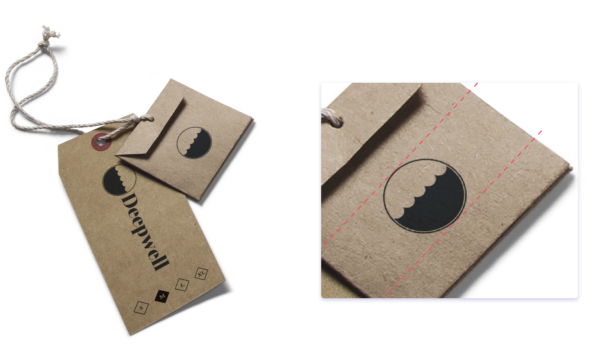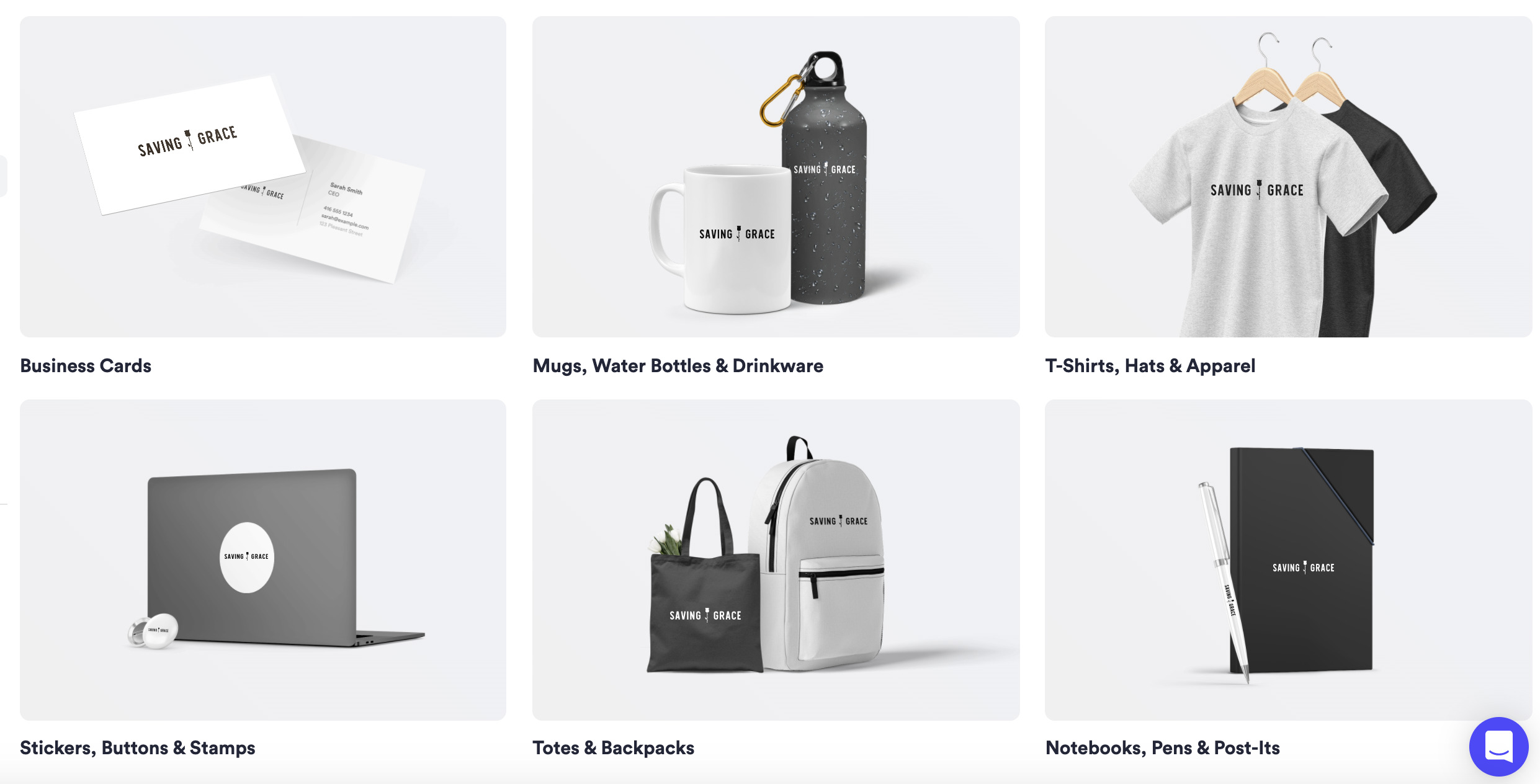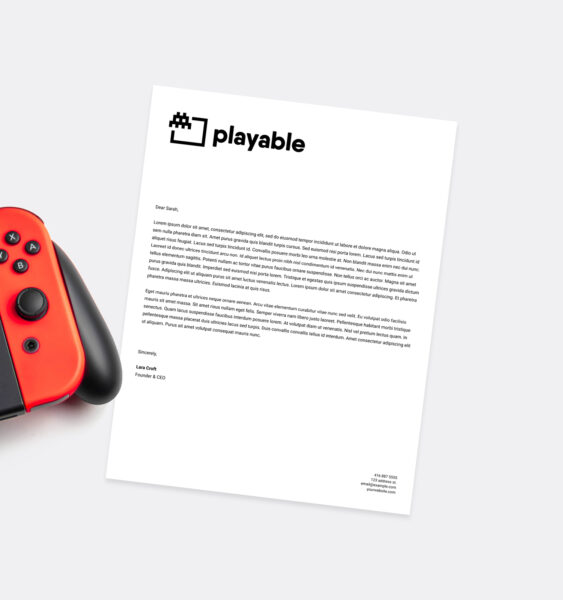How to Print Your Logo on (Almost) Anything

When you print your logo on a physical object, you can reach people at a different level than if they see it online. And there’s no better passive advertisement for your business than someone wearing clothing with your logo on it — especially if it looks fantastic!
In this article, we’ll look at how to print your logo and some logo printing best practices so you’ll have what you need to get top-notch results.
Logo file types and variations for print
Before you send your logo design to the printer, consider a few things, including which version of your logo is best for the product you want to print it on.
When you design your logo online, you’ll want to consider creating different logo variations. You’ll usually have the “full” version of your logo (wordmark and symbol, or slogan if you have one), plus a symbol or monogram-only version of your logo that’s better suited for small spaces.

A mug might look better with a smaller symbol version of your logo, so it doesn’t become warped on the curved surface. A notepad, on the other hand, will be a prime canvas for the full logo because it’s a larger and flatter surface.
You’ll also want to consider the color and texture of the object. For example, a colorful plastic water bottle will probably look better with a black or white logo instead of a full-color version.
Most importantly, send printers a transparent version of your logo. A logo with a white or colored rectangular background won’t look as good as one with no background at all.
Regarding logo file types, printers usually prefer that you send them a vector EPS file or sometimes raster images so they can apply it to products with their software. They might also ask for a PDF or PNG file for a test run — you should always request a mockup before printing the final products!
Printing methods
It’s worth knowing the printing method you’ll use to make sure the final product is perfect. There are various printing techniques available, each with its own unique characteristics that can impact how your logo looks and feels on the final product.
For instance, screen printing on a T-shirt will require a transparent background, while embroidery requires a digitized version of your logo with multiple layers and colors. Digital printing is another popular method, and it involves transferring your logo onto the product using a digital printer.
To achieve the best results, it’s essential to check with your printer what options they have available and determine which type of file is required for the specific printing method. This will help you to ensure that your logo is printed flawlessly every time, no matter what you are printing on.
Printing your logo on stationery
Apart from business cards, you can print your logo on all sorts of stationery items, from envelopes to posters.
The most-used item is probably the letterhead on the paper used to print letters and official documents. Letterheads usually include your logo and your company’s contact information. Also consider printing your logo on envelopes, notebooks, presentation folders, keycards, pins, and more.
The most important thing to remember when printing your logo on stationery is that it needs to have a margin.
So, for example, when a 1/2-inch logo is added to a business card design, the text should have at least a 1/4-inch separation from it.

Likewise, there should be at least that much margin space between the logo and the edge of a business card. Visually, it’ll look better with a little space between the logo and the edge.
On smaller items like USB drives and round button pins, the margin can be reduced so that space is well-used. Take a look at the business stationery printing options at Vistaprint, where you can get several different items printed in one go.
Printing your logo on clothing
The most common clothing pieces to print your logo are T-shirts, polo shirts, hats, hoodies, and socks. You can print logos on apparel in a few different ways, including embroidery, screen printing, or transfer:
Embroidery
Embroidery is a technique that involves a stitching machine. The image of the logo is uploaded to the software, and the machine stitches the logo on any surface. Thick fabrics are best if you want to go the embroidery route: think caps, jackets, and polo shirts. If you opt for embroidery (or an iron-on patch), you must use a converter like Convertio to get the correct logo files.
Screen printing
Screen printing is a technique that’s ideal for large quantities of products because the screens have to be custom-made for each design. The durability of screen printing is quite good and can last on fabric for a long time. This is a common method for printing logos on T-shirts and bags.
Transfers
Transfer are vinyl stickers made especially for fabric. This printing method is the least durable option, as it can peel off when you wash clothing in hot water. That said, it’s also the least expensive option and is perfect if you only need a few prints. A transfer is printed on a special printer and then pressed onto the fabric with a hot press.
When printing your logo on clothing, make sure to do a test run to check the colors. Printed logos look great on the left breast area of polo shirts and T-shirts, at least one inch in size and not larger than two inches.
If you want to print a large version of your logo on a T-shirt, it’ll look better on the back since it will always stay flat. On hats, a logo looks good embroidered in a small format (between 1.5 to 2.5 inches) on the bottom corner of the front panel or large and centered. Be sure to leave margins so that the logo is easy to see.

If you’re interested in printing your logo on clothing, check out Custom Ink or search for reputable vendors in your area.
Printing your logo on packaging
If you sell products or clothing, you might want to print your logo on labels and tags or packaging like boxes and bags.
When printing your logo on packaging, make sure the logo is easy to see and recognize. If the packaging design includes more elements apart from your logo (such as a patterned background), make sure these designs don’t overpower the logo itself.
You can print your logo on labels in a few different ways; for example, embroidered on a ribbon or printed on soft viscose plastic white rectangles. For swimsuit or workout apparel, you can even opt to have the logo printed on silicone or metal. Boxes can be produced with many different types of material, from recycled cardboard to stiff see-through plastic. Center your logo in a section of the packaging so it’s easy for the customer to see, and leave a bit of a margin around the logo so that it stands out.
Boxes can be produced with many different types of material, from recycled cardboard to stiff see-through plastic. Center your logo in a section of the packaging so it’s easy for the customer to see, and leave a bit of a margin around the logo so that it stands out.
For clothing boxes, place your logo in the center of the top of the box. Consider printing your logo on tissue paper if your products need to be wrapped inside the box. You can also print your logo on ribbons for a cute packaging option.
Apparel design also needs price tags. Your logo should be centered on these tags with a nice margin. Try an embossed printing option on thick cardboard for a unique look.
Printing your logo on products and swag
If you want to print your logo on swag, it’s best to start small. Don’t go crazy and order hundreds of pens, keychains, and stickers. Think of your clients — what kind of merchandise would they really appreciate?
A gym or sports-related company can print their logo on water bottles and towels. Pet supply or dog-walking companies can put their logo on leashes or food bowls. Consider what your clients will appreciate and enjoy using, then choose one or two products and test them out.
Swag comes in all shapes and sizes. For this reason, it’s important to be aware of each item’s imprint area.
The company you hire to print your swag will give you size guidelines. For example, on smaller imprint areas like on a pen, choose a version of your logo that doesn’t have a slogan.
Some online companies (like Zazzle) will let you upload your own logo design and preview it on many different products. They give you the minimum and maximum size for any product; follow their exact directions for the best results.
 Printing your logo on signs
Printing your logo on signs
Whether it’s a sidewalk stand or a billboard, a sign is an eye-catching way to show off your brand.
For these uses, remember that printers need vector EPS files of your logo. Signs tend to be big; if your logo is in small file size, it’ll look blurry and unprofessional.
If the logo will be on its own on the sign, center it and leave plenty of space for it to shine. Find local sign suppliers by asking other companies with great-looking signs for a referral. There’s nothing better than word of mouth for getting top-notch service.

Printing your logo on almost any physical object is possible. The most important thing to remember? Check with the printing service you’re using to ensure you’re submitting the right file type and version of your logo. And always get a mockup or proof to review!
Easily print your logo on anything using Looka’s print shop!
If you’re looking for a one-stop shop for your brand, try using Looka! Simply generate a logo using Looka’s logo maker, then access the print shop through our Brand Kit.
Here, you’ll see several items from tote bags, to mugs that you can print your logo on.

Whether it’s a sign, a T-shirt, or a label, take the time to consider the placement, size, and color so you’ll be happy with the final result.
Ready to make a logo design that’s print-worthy?


